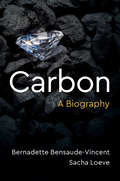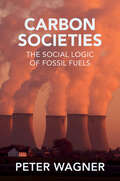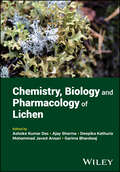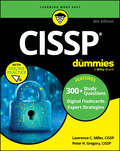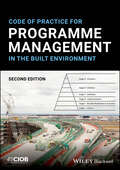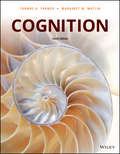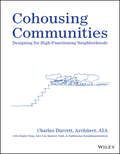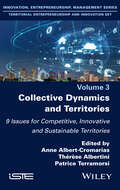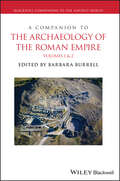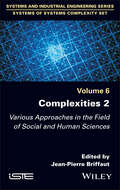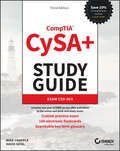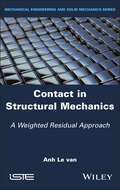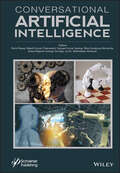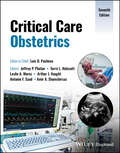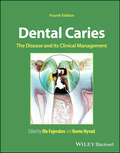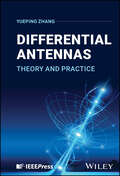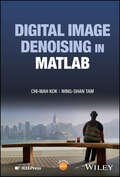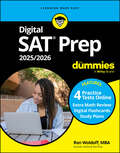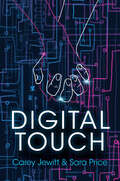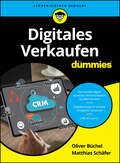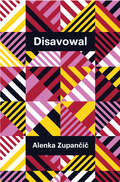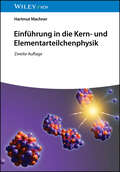- Table View
- List View
Capitalism Created the Climate Crisis and Capitalism Will Solve It: The Market Forces Catalyzing a Climate Technology Renaissance
by Kentaro KawamoriCreative and practical free-market solutions to climate change In Capitalism Created the Climate Crisis and Capitalism Will Solve It: The Market Forces Catalyzing a Climate Technology Renaissance, distinguished author Kentaro Kawamori delivers a fascinating and timely exploration of the interplay between capitalism and climate change. He explains how the capitalist system helped to contribute to the current crisis of global warming and how that same system will help to end it. In the book, the author discusses the enormous impact of the climate crisis and how the government, the modern finance industry, the fossil fuel industry, and others combined to accelerate the warming of the world. He then considers the roles those same players will play to reverse this effect in the coming years. You’ll also find: Discussions of how climate tech innovations will transform the economy and how technology disruptors will become involved in the process The ways the energy industry will change to incorporate the realities and consequences of a warming climate Explorations of the incentives created by free market structures and how to include climate stakeholders in the discussionAn engaging and exciting new resource for anyone interested in the intersection of economics, business, and the environment, Capitalism Created the Climate Crisis and Capitalism Will Solve It contains practical and thoughtful climate prescriptions for a world desperately in need of them.
Carbon: A Biography
by Sacha Loeve Bernadette Bensaude-VincentCarbon is much more than a chemical element: it is a polymorphic entity with many faces, at once natural, cultural and social. Ranging across ten million different compounds, carbon has as many personas in nature as it has roles in human life on earth. And yet it rarely makes the headlines as anything other than the villain of our fossil-based economy, feeding an addiction which is driving dangerous levels of consumption and international conflict and which, left unchecked, could lead to our demise as a species. But the impact of CO₂ on climate change only tells part of the story, and to demonize carbon as an element which will bring about the downfall of humanity is to reduce it to a pale shadow of itself. In this major new history of carbon, Bernadette Bensaude-Vincent and Sacha Loeve show that this omnipresent element is at the root of countless histories and adventures through time, thanks to its extraordinary versatility. Carbon has a long and prestigious CV: its work and achievements extend far beyond the burning of fossil fuels. The fourth most abundant element in the universe and the second most abundant element in the human body, carbon is the chemical basis of all known life. Carbon chemistry has a long history, with applications ranging from jewellery to heating, underpinning developments in metallurgy, textiles, pharmaceuticals, electronics, nanoscience and green technologies. A biography of carbon transgresses the boundaries between chemical and social existence, between nature and culture, forcing us to abandon the simplified image of carbon as the anti-hero of human civilization and enabling us to see instead the great diversity of carbon’s modes of existence. With scientific precision and literary flair, Bensaude-Vincent and Loeve unravel the surprising ways in which carbon has shaped our world, showing how unrecognizable the earth would be without it. Uncovering the many hidden lives of carbon allows us to view our own with fresh eyes.
Carbon Societies: The Social Logic of Fossil Fuels
by Peter WagnerThe climate crisis is humanmade. Its main cause is the burning of fossil fuels. To combat climate change, we have to understand how we arrived at where we are. This book explores the reasons why human societies have embarked on the trajectory of ever-increasing use of fossil fuels.Population growth, desire for freedom from want and profit-seeking all played major roles in shaping human history, but there has been no inevitable drive towards heating up the atmosphere in the pursuit of social objectives. To sustain a growing population, more natural resources are required, but their use does not need to generate climate change. No logic of modernity links freedom with a kind of material abundance that requires the burning of fossil fuels. No logic of capital necessarily ties the search for profit to the extraction of fossil resources.Examining the critical junctures in human history when resource regimes changed, this book identifies the social problems that were meant to be solved by burning fossil fuels and the power hierarchies that shaped the decisions to use them. Wagner argues that the key choices that led to the climate emergency were made relatively recently, during the second half of the 20th century: they are close enough in time for us to undo the prevailing social logic of fossil fuels. By redefining the key problems that humankind is facing and reshaping the existing mechanisms of power, we can take the decisive action needed to reduce our dependence on fossil fuels and avert the worst consequences of climate change.
Chemistry, Biology and Pharmacology of Lichen
by Ajay Sharma Mohammad Javed Ansari Garima Bhardwaj Ashoke Kumar Das Deepika KathuriaUnderstand the properties and applications of one of the world’s most ubiquitous flora Lichen is a single entity comprising two or more organisms—most typically algae and fungus—in a symbiotic relationship. It is one of the planet’s most abundant categories of flora, with over 25,000 known species across all regions of the globe. Lichens’ status as a rich source of bioactive metabolites and phytochemicals, as well as their potential as bio-indicators, has given them an increasingly prominent role in modern research into medicine, cosmetics, food, and more. Chemistry, Biology and Pharmacology of Lichen provides a comprehensive overview of these bountiful flora and their properties. It provides not only in-depth analysis of lichen physiology and ecology, but also a thorough survey of their modern and growing applications. It provides all the tools readers need to domesticate lichen and bring their properties to bear on some of humanity’s most intractable scientific problems. Chemistry, Biology and Pharmacology of Lichen readers will also find: Applications of lichen in fields ranging from food to cosmetics to nanoscience and beyond Detailed discussion of topics including lichen as habitats for other organisms, lichens as anticancer drugs, antimicrobial properties of lichen, and many more Detailed discussion on key bioactive compounds from lichens Chemistry, Biology and Pharmacology of Lichen is ideal for scientists and researchers in ethnobotany, pharmacology, chemistry, and biology, as well as teachers and students with an interest in biologically important lichens.
CISSP For Dummies
by Peter H. Gregory Lawrence C. MillerShowcase your security expertise with the highly regarded CISSP certification The CISSP certification, held by more than 150,000 security professionals worldwide, is the gold standard of cybersecurity certifications. The CISSP Exam certifies cybersecurity professionals and opens doors for career advancement. Fully updated and revised to reflect the 2024 ISC2 CISSP Exam Outline, CISSP For Dummies is packed with helpful content for all eight security domains. This book includes access to online study tools such as practice questions and digital flashcards, boosting your likelihood of success on the exam. Plus, you'll feel prepared and ready for test day thanks to a 60-day study plan. Boost your security career with this Dummies study guide. Review all the content covered in the latest CISSP Exam Test with confidence and achieve your certification as a cybersecurity professional Study smarter, thanks to online practice resources and a 60-day study plan Enhance your career with the in-demand CISSP certification Continue advancing your career and the profession through speaking and mentoring opportunities With up-to-date content and valuable test prep features, this book is a one-and-done resource for any cybersecurity professional studying for the CISSP exam.
Classroom Assessment Techniques: Formative Feedback Tools for College and University Teachers
by Thomas A. Angelo Todd D. ZakrajsekClassroom Assessment Techniques: Formative Feedback Tools for College and University Teachers A practical, research-based handbook for using assessment to improve learning. This completely revised and updated third edition of Classroom Assessment Techniques provides a research-based, engaging guide to assessing student learning where it matters most—at course and classroom levels. Informed by the latest international educational research and 30 years of classroom assessment practice, this practical handbook is designed for postsecondary teachers from all disciplines, faculty and academic developers, and assessment professionals. It offers field-tested guidance, tools, and advice for planning, designing, and implementing formative assessment in face-to-face, hybrid, and fully online classrooms, analyzing resulting data, and using that data to improve student learning. Classroom Assessment Techniques, 3rd Edition, is a practical, clearly written handbook for busy professionals. It contains a wealth of useful resources, including: 50-plus CATs (classroom assessment techniques) – flexible formative assessment tools easily adaptable for use in a wide range of disciplines and contexts. Case studies and examples illustrating how college and university faculty have applied these techniques to improve learning A new “Course Learning Outcomes Inventory” (CLOI)—a self-assessment tool for identifying and prioritizing the most relevant learning outcomes to assess The original “Teaching Goals Inventory” (TGI) which offers an alternate, teaching-focused approach to setting assessment priorities Multiple ways to quickly find the most appropriate tool. CATs are indexed by discipline examples, Bloom’s Taxonomy, Biggs and Tang’s SOLO Taxonomy, the CLOI, and the TGI Brief chapters explaining what formative assessment is, how it can improve student learning, how to gather and provide formative feedback, how to link classroom assessment with broader/other assessment efforts, and how to collaborate with students and colleaguesEach CAT provides a brief, self-contained “recipe” including a description, steps for implementation, dos and don’ts, and relevant references
Code of Practice for Programme Management in the Built Environment
by CIOB (The Chartered Institute of Building)CODE OF PRACTICE FOR PROGRAMME MANAGEMENT IN THE BUILT ENVIRONMENT Manage a construction programme from start to finish with this up-to-date guide The maturation and proliferation of project management principles has been one of the most important stories in recent business history. So widely has project management spread throughout the corporate world that it has now given way to a similar discipline, programme management, designed to align, coordinate and manage a number of related projects as a whole. In the construction industry particularly, programme management can deliver benefits that would not have been possible to realise had individual projects been managed independently. Produced by the Chartered Institute of Building (CIOB), the revised Code of Practice for Programme Management in the Built Environment provides a comprehensive overview of the tools required to deliver such benefits, and how they are applied in construction programmes. A natural complement to the CIOB’s popular Code of Practice for Project Management for the Built Environment, it is now fully updated to reflect new insights and best practices. Readers of the second edition of Code of Practice for Programme Management in the Built Environment will find: Theoretical and practical insights derived from research and experience Coverage of setting up programmes successfully so that teams feel confident to deliver the final outcome Guidelines for implementing programme management for the built environment Code of Practice for Programme Management in the Built Environment is ideal for programme management and project management professionals involved in this industry and in particular, contractors and client organisations, as well as for advanced undergraduate and postgraduate students in construction project management and other related disciplines. The Chartered Institute of Building is the world’s largest professional body for construction management and leadership. It has a Royal Charter to promote the science and practice of building and construction for the benefit of society. Members across the world work in the development, conservation, and improvement of the built environment.
Cognition
by Margaret W. Matlin Thomas A. FarmerThe study of human cognitive processes provides insight into why we act or react and can help us predict future behaviors. In Cognition, authors Thomas Farmer and Margaret Matlin present an engaging and highly relatable examination of how these processes work, and how they are responsible for the way we perceive and interpret the world around us. Broad in scope without sacrificing depth of detail, this text emphasizes the link between conceptual cognitive psychology and real-world experience; case studies, current trends, and historical perspectives merge to provide a comprehensive understanding of core principles and theories. <P><P>This new Tenth Edition has been updated to reflect the latest research, technology, and thinking, with more in-depth coverage of topics rising to prominence in the field’s current knowledge base. Expanded explanations balance classical and contemporary approaches to specific topics, while additional experiments and an emphasis on methodology and experimental design are included to facilitate a greater appreciation of the field’s rigorous research.
Cohousing Communities: Designing for High-Functioning Neighborhoods
by Charles DurrettExplore a groundbreaking and holistic new approach to designing community-first neighborhoods In Cohousing Communities: Designing for High-Functioning Neighborhoods, distinguished architect and affordable housing advocate Charles Durrett delivers a complete, start-to-finish guide for designing anything where the emphasis lies with the community. This book describes the consequential role that architecture and a healthy design process can play in the success of neighborhoods, churches, towns, and more. It’s an inspiring collection of ideas that prioritize high-functioning neighborhoods. In the book, the author draws on the success of hundreds of community-first projects to show readers how to design a project that addresses both timeless and modern challenges—from aging to climate change and racism—in its architecture and urban design. He compiles facts and concepts that are essential to the design of a high-functioning community, where people can participate in a way that reflects their values, improves their social connections, and retain their autonomy and privacy. Readers will also find: Ideas for town planning, street planning, and other town altering improvements Discussions of how developers can make better multifamily housing Explorations of how planners and politicians can make high-functioning neighborhoods a cornerstone of their community In-depth treatments of families who want to confirm that they’re choosing the right neighborhood Perfect for university students and professors who strive to see new ways to create neighborhoods, Cohousing Communities: Designing for High-Functioning Neighborhoods will also appeal to universities planning new neighborhoods for retired alumni or new housing for students and faculty. Praise for Charles Durrett and Cohousing Communities: “…Get and read Cohousing Communities… Read it from the front cover to the back cover. It’s The Bible of Cohousing. And, like The Bible, it needs to be STUDIED not just read. Mark it up w/ your questions. Highlight, underline, write in the margins, fold the corners… This way you will gather your understanding how building cohousing gets “done," create your pathway to “Getting It Built”… and, most importantly get everyone on the same page for working together.” -- Ann Zabaldo, Executive Director, Mid Atlantic Cohousing
Collective Dynamics and Territories: 9 Issues for Competitive, Innovative and Sustainable Territories
by Anne Albert-Cromarias Patrice Terramorsi Thérèse AlbertiniFaced with global economic, social and environmental challenges requiring us to go beyond individual actions, the development of collective dynamics is the ideal response. From this perspective, territories, which have long been neglected, are now asserting themselves as breeding grounds for innovative and relevant forms of organized action in response to shared experiences. Bringing together more than twenty researchers in strategic management, human resources management and marketing, Collective Dynamics and Territories offers, through nine territorial issues (innovating and regenerating territories, building environmental action, attracting and retaining talent, etc.), insights into the conditions and modalities for developing collective dynamics within territories. The success of local collective dynamics depends on support for the actors involved, from situation analysis to problem definition, including idea generation, selection, implementation and evaluation. This book offers a comprehensive, systemic and operational vision for analyzing and acting on collective territorial dynamics.
A Companion to the Archaeology of the Roman Empire, 2 Volume Set (Blackwell Companions to the Ancient World)
by Barbara BurrellA one-of-a-kind exploration of archaeological evidence from the Roman Empire between 44 BCE and 337 CE In A Companion to the Archaeology of the Roman Empire, distinguished scholar and archaeologist Professor Barbara Burrell delivers an illuminating and wide-ranging discussion of peoples, institutions, and their material remains across the Roman Empire. Divided into two parts, the book begins by focusing on the “unifying factors,” institutions and processes that affected the entire empire. This ends with a chapter by Professor Greg Woolf, Ronald J. Mellor Professor of Ancient History at UCLA, which summarizes and enlarges upon the themes and contributions of the volume. Meanwhile, the second part brings out local patterns and peculiarities within the archaeological remains of the City of Rome as well as almost every province of its empire. Each chapter is written by a noted scholar whose career has focused on the subject. Chronological coverage for each chapter is formally 44 BCE to 337 CE, but since material remains are not always so closely datable, most chapters center on the first three centuries of the Common Era, plus or minus 50 years. In addition, the book is amply illustrated and includes new and little-known finds from oft-ignored provinces. Readers will also find: A thorough introduction to the peoples and operations of the Roman Empire, including not just how the center affected the periphery ("Romanization") but how peripheral provinces operated on their own and among their neighbors Comprehensive explorations of local patterns within individual provinces Contributions from a diverse panel of leading scholars in the field A unique form of organization that brings out systems across the empire, such as transport across sea, rivers and roads; monetary systems; pottery and foodways; the military; construction and technologyPerfect for graduate and advanced undergraduate students of archaeology and the history of the Roman Empire, A Companion to the Archaeology of the Roman Empire will also earn a place in the libraries of professional archaeologists in other fields, including Mayanists, medievalists, and Far Eastern scholars seeking comparanda and bibliography on other imperial structures.
Complexities 2: Various Approaches in the Field of Social and Human Sciences
by Jean-Pierre Briffaut Daniel KrobAwareness of complexity in science and technology dates back to the 1970s. However, all social systems tend to develop structures that become more complex over time, be it within families, tribes, cities, states, or societal and economic organizations. Complexities 2 covers a broad array of fields, from justice and linguistics to education and organizational management. The aim of this book is to show, without aiming to provide a comprehensive overview, the diversity of approaches and behaviors towards the obstacle of complexity in understanding and achieving human actions. When we see complexity as the incompleteness of knowledge and the uncertainty of the future, we realize that simplifying is not an adequate approach to complexity, even in the humanities and social sciences. This book explores the relationship between order and disorder in this field of knowledge.
CompTIA CySA+ Study Guide: Exam CS0-003 (Sybex Study Guide)
by David Seidl Mike ChappleMaster key exam objectives and crucial cybersecurity concepts for the updated CompTIA CySA+ CS0-003 exam, along with an online test bank with hundreds of practice questions and flashcards In the newly revised third edition of CompTIA CySA+ Study Guide: Exam CS0-003, a team of leading security experts and tech educators delivers comprehensive and accurate coverage of every topic and domain covered on the certification exam. You’ll find clear and concise information on critical security topics presented by way of practical, real-world examples, chapter reviews, and exam highlights. Prepare for the test and for a new role in cybersecurity with the book’s useful study tools, including: Hands-on lab exercises and an opportunity to create your own cybersecurity toolkit Authoritative discussions of each exam competency, including security operations, vulnerability management, incident response and management, and reporting and communication Complimentary access to Sybex's proven library of digital resources, including an online test bank, bonus questions, flashcards, and glossary, all supported by Wiley's support agents who are available 24x7 via email or live chat to assist with access and login questions Reduce test anxiety and get a head-start learning the on-the-job skills you’ll need on your first day in a cybersecurity career. Or augment your existing CompTIA Security+ certification with an impressive new credential. Fully updated for the newly released CS0-003 exam, CompTIA CySA+ Study Guide: Exam CS0-003, Third Edition is an essential resource for test takers and cybersecurity professionals alike. And save 10% when you purchase your CompTIA exam voucher with our exclusive WILEY10 coupon code.
Contact in Structural Mechanics: A Weighted Residual Approach
by Anh Le vanContact in Structural Mechanics treats the problem of contact in the context of large deformations and the Coulomb friction law. The proposed formulation is based on a weak form that generalizes the classical principle of virtual powers in the sense that the weak form also encompasses all the contact laws. This formulation is thus a weighted residue method and has the advantage of being amenable to a standard finite element discretization. This book provides the reader with a detailed description of contact kinematics and the variation calculus of kinematic quantities, two essential subjects for any contact study. The numerical resolution is carried out in statics and dynamics. In both cases, the derivation of the contact tangent matrix – an essential ingredient for iterative calculation – is explained in detail. Several numerical examples are presented to illustrate the efficiency of the method.
Conversational Artificial Intelligence
by Romil Rawat Rajesh Kumar Chakrawarti Sanjaya Kumar Sarangi Piyush Vyas Mary Sowjanya Alamanda Kotagiri Srividya Krishnan Sakthidasan SankaranThis book reviews present state-of-the-art research related to the security of cloud computing including developments in conversational AI applications. It is particularly suited for those that bridge the academic world and industry, allowing readers to understand the security concerns in advanced security solutions for conversational AI in the cloud platform domain by reviewing present and evolving security solutions, their limitations, and future research directions. Conversational AI combines natural language processing (NLP) with traditional software like chatbots, voice assistants, or an interactive voice recognition system to help customers through either a spoken or typed interface. Conversational chatbots that respond to questions promptly and accurately to help customers are a fascinating development since they make the customer service industry somewhat self-sufficient. A well-automated chatbot can decimate staffing needs, but creating one is a time-consuming process. Voice recognition technologies are becoming more critical as AI assistants like Alexa become more popular. Chatbots in the corporate world have advanced technical connections with clients thanks to improvements in artificial intelligence. However, these chatbots’ increased access to sensitive information has raised serious security concerns. Threats are one-time events such as malware and DDOS (Distributed Denial of Service) assaults. Targeted strikes on companies are familiar and frequently lock workers out. User privacy violations are becoming more common, emphasizing the dangers of employing chatbots. Vulnerabilities are systemic problems that enable thieves to break in. Vulnerabilities allow threats to enter the system, hence they are inextricably linked. Malicious chatbots are widely used to spam and advertise in chat rooms by imitating human behavior and discussions, or to trick individuals into disclosing personal information like bank account details.
Critical Care Obstetrics
by Luis D. PachecoCritical Care Obstetrics Improve medical outcomes for both mothers and children with this essential guide For the first time in decades, maternal mortality rates are climbing in the United States. Factors including lack of access to prenatal care, un- or underinsured populations, rising rates of cardiovascular disease, and more combine to make pregnancy and childbirth more dangerous prospects. In this environment, the study of critical care obstetrics has never been more essential. Critical Care Obstetrics, Seventh Edition a fully updated guide to the medical management of serious conditions in pregnancy and childbirth. Beginning with basic principles, it surveys the potential serious complications occurring in pregnancy and delivery and the techniques and procedures for maximizing patient outcomes for both pregnant people and fetuses. This clear, accessible text promises to continue the essential work of earlier editions. Readers of the seventh edition of Critical Care Obstetrics will also find: Detailed protocols for implementing life-saving treatments in emergencies New chapters on topics including ECMO, antibiotics, and pneumonia Authorship by internationally renowned experts in emergency obstetrics Critical Care Obstetrics is ideal for working clinical obstetricians and for trainees in obstetrics and gynecology.
Deep Learning Techniques for Automation and Industrial Applications
by Abhishek Kumar Pramod Singh Rathore Sachin Ahuja Anupam Baliyan Srinivasa Rao Burri Ajay KhuntetaThis book provides state-of-the-art approaches to deep learning in areas of detection and prediction, as well as future framework development, building service systems and analytical aspects in which artificial neural networks, fuzzy logic, genetic algorithms, and hybrid mechanisms are used. Deep learning algorithms and techniques are found to be useful in various areas, such as automatic machine translation, automatic handwriting generation, visual recognition, fraud detection, and detecting developmental delays in children. “Deep Learning Techniques for Automation and Industrial Applications” presents a concise introduction to the recent advances in this field of artificial intelligence (AI). The broad-ranging discussion covers the algorithms and applications in AI, reasoning, machine learning, neural networks, reinforcement learning, and their applications in various domains like agriculture, manufacturing, and healthcare. Applying deep learning techniques or algorithms successfully in these areas requires a concerted effort, fostering integrative research between experts from diverse disciplines from data science to visualization. This book provides state-of-the-art approaches to deep learning covering detection and prediction, as well as future framework development, building service systems, and analytical aspects. For all these topics, various approaches to deep learning, such as artificial neural networks, fuzzy logic, genetic algorithms, and hybrid mechanisms, are explained. Audience The book will be useful to researchers and industry engineers working in information technology, data analytics network security, and manufacturing. Graduate and upper-level undergraduate students in advanced modeling and simulation courses will find this book very useful.
Dental Caries: The Disease and its Clinical Management
by Ole Fejerskov Bente NyvadAuthoritative and comprehensive resource on the disease process and clinical management of dental caries. Dental Caries: The Disease and Its Clinical Management, 4th Edition maintains the same focus on high-level coverage of the disease etiology and process, clinical assessment and prognosis and wider public health issues connected with dental caries management, including an enhanced focus on caries control. Fully updated throughout, the chapters that discuss theory emphasize how the knowledge can be applied in both the clinic and in the public health domain to improve oral health. The new edition also includes up-to-date and validated diagnostic and management options for caries whilst ensuring that the tools provided allow practitioners to serve the needs of different socio-economic populations. All sections are complimented by high-quality color photographs, clear line drawings and references for further study. With contributions from international experts in research and clinical practice, Dental Caries includes information on: Acquisition and establishment of the oral microbiome, metabolism of the microbiome in caries, and the essential role of saliva for dental caries and erosionInitiation and progression of dental caries in dental hard tissues and the relationship between sugar, diets, and dental cariesThe caries control concept and consequences for minimally invasive management of cariesCaries control in children, adults, and the elderly, including root surface caries and oral health care in the elderlyImplication of caries control for the dental profession, including best practices for assessment of lesion activity, prognosis and risk for developing dental caries Dental Caries, Fourth Edition is an unrivaled guide to tooth decay, and a must-have resource for undergraduate and postgraduate students in dental public health, paediatric and restorative dentistry as well as all practitioners looking to develop their clinical skills.
Differential Antennas: Theory and Practice
by Yueping ZhangA comprehensive introduction to the theory and practice of differential antennas The first antennas ever created were differential antennas, in the dipole and loop constructions, before the subsequent creation of the single-ended or monopole antenna. Dozens of basic antenna configurations have been invented since then, the majority of them differential. The theory and design of differential antennas therefore has an impact on a huge range of fields which make use of electromagnetic waves. Differential Antennas contains a thorough, comprehensive overview of these antennas, their theory, and their practical applications. It details the relationship between differential and single-ended antennas, which may act as tools for determining the properties of one when the other is known. This book offers an analysis of the role differential antennas play in wireless communication and sensing. Overall, it stands as an essential contribution to a key area of communications technology. Differential Antennas readers will also find: Chapters covering topics including microstrip antennas, shorted patch antennas, grid array antennas, and other designs Tables and figures illustrating key data, antenna structures, and more Instructions for measuring differential antennas for characterization and specification purposes Differential Antennas is ideal for senior and graduate level students, researchers, and radio frequency engineers.
Digital Image Denoising in MATLAB (IEEE Press)
by Wing-Shan Tam Chi-Wah KokPresents a review of image denoising algorithms with practical MATLAB implementation guidance Digital Image Denoising in MATLAB provides a comprehensive treatment of digital image denoising, containing a variety of techniques with applications in high-quality photo enhancement as well as multi-dimensional signal processing problems such as array signal processing, radar signal estimation and detection, and more. Offering systematic guidance on image denoising in theories and in practice through MATLAB, this hands-on guide includes practical examples, chapter summaries, analytical and programming problems, computer simulations, and source codes for all algorithms discussed in the book. The book explains denoising algorithms including linear and nonlinear filtering, Wiener filtering, spatially adaptive and multi-channel processing, transform and wavelet domains processing, singular value decomposition, and various low variance optimization and low rank processing techniques. Throughout the text, the authors address the theory, analysis, and implementation of the denoising algorithms to help readers solve their image processing problems and develop their own solutions. Explains how the quality of an image can be quantified in MATLAB Discusses what constitutes a “naturally looking” image in subjective and analytical terms Presents denoising techniques for a wide range of digital image processing applications Describes the use of denoising as a pre-processing tool for various signal processing applications or big data analysis Requires only a fundamental knowledge of digital signal processing Includes access to a companion website with source codes, exercises, and additional resources Digital Image Denoising in MATLAB is an excellent textbook for undergraduate courses in digital image processing, recognition, and statistical signal processing, and a highly useful reference for researchers and engineers working with digital images, digital video, and other applications requiring denoising techniques.
Digital SAT Prep 2025/2026 For Dummies: Book + 4 Practice Tests + Flashcards Online
by Ron WoldoffGet the score you need to land scholarships and get into the school of your dreams The SAT is a crucial step in the college admissions process, and a high score can put you on the road to the future you're dreaming of. Digital SAT Prep 2025/2026 For Dummies gives you the building blocks you need to take the test with confidence. First, get a primer on all the concepts tested on the SAT and find handy strategies for test day to boost your score. Then, apply what you've learned, with four practice tests online, complete with detailed answer explanations. New digital flashcards quiz you on your math and verbal skills, and detailed study plans help you stay on track. With this no-nonsense Dummies guide, you have everything you need to knock the SAT out of the park. Get clear explanations of all the content on the digital SAT, plus practice questions with answer explanations Quiz your heart out with 4 full-length practice tests and flashcards online Follow a customizable study plan, so you know you're making the most of the time you have left before the test Improve your chances of getting into your top-choice colleges with a high SAT score Digital SAT Prep 2025/2026 For Dummies is for anyone looking for that extra edge on this all-important college entrance exam.
Digital Touch
by Carey Jewitt Sara PriceTouch matters. It is fundamental to how we know ourselves and each other, and it is central to how we communicate. Digital touch is embedded in many technologies, from wearable devices and gaming hardware to tactile robots and future technologies. What would it be like if we could hug or touch digitally across distance? How might this shape our sense of connection? How might we establish trust or protect our privacy and safety? Digital Touch is a timely and original book that addresses such questions. Offering a rich account of digital touch, the book introduces the key issues and debates, as well as the design and ethical challenges raised by digital touch. Using clear, accessible examples and creative scenarios, the book shows how touch – how we touch, as well as what, whom and when we touch – is being profoundly reshaped by our use of technologies. Above all, it highlights the importance of digital touch in our daily lives and how it will impact our relationships and way of life in the future. The first work of its kind, Digital Touch is the go-to book for anyone wanting to get to grips with this crucial emerging topic, especially students and scholars of Digital Media and Communication Studies, Digital Humanities, Sensory Studies, and Science and Technology Studies.
Digitales Verkaufen für Dummies: Virtuelle Kommunikation im Vertrieb (Für Dummies)
by Matthias Schäfer Oliver BüchelDigitalisierung für Vertriebserfolge optimal einsetzen Digitales Verkaufen bietet Ihnen jede Menge neuer Chancen. Entwickeln Sie ein neues Mindset und eine erfolgreiche Vertriebsstrategie. Nutzen Sie zusätzliche Vertriebskanäle sowie neue Formen der Kommunikation mit Ihren Kunden. Wie Sie die digitale Klaviatur sicher spielen, Ihre Kunden auf virtuellem Weg ansprechen und digitale Verkaufsabschlüsse erreichen, verraten Ihnen die beiden Verkaufsexperten Oliver Büchel und Matthias Schäfer in ihrem Buch. Sie werden Ihre Kunden digital in den Mittelpunkt rücken und Ihre Produkte oder Dienstleistungen bei Ihrer Zielgruppe noch besser platzieren können. Sie erfahren Wie Sie eine digitale Vertriebsstrategie entwickelnWie CRM, Social Selling, KI, Virtual und Augmented Reality Sie beim Verkaufen unterstützen könnenWie virtuelle Kundenbeziehungen funktionierenWie Sie die neuen Kommunikationsformen richtig einsetzen
Disavowal (Theory Redux)
by Alenka ZupančičThis book argues that the psychoanalytic concept of disavowal best renders the structure underlying our contemporary social response to traumatic and disturbing events, from climate change to unsettling tectonic shifts in our social tissue. Unlike denialism and negation, disavowal functions by fully acknowledging what we disavow. Zupančič contends that disavowal, which sustains some belief by means of ardently proclaiming the knowledge of the opposite, is becoming a predominant feature of our social and political life. She also shows how the libidinal economy of disavowal is a key element of capitalist economy. The concept of fetishistic disavowal already exposes the objectified side of the mechanism of the disavowal, which follows the general formula: I know well, but all the same, the object-fetish allows me to disregard this knowledge. Zupančič adds another twist by showing how, in the prevailing structure of disavowal today, the mere act of declaring that we know becomes itself an object-fetish by which we intercept the reality of that very knowledge. This perverse deployment of knowledge deprives it of any reality.This structure of disavowal can be found not only in the more extreme and dramatic cases of conspiracy theories and re-emerging magical thinking, but even more so in the supposedly sober continuation of business as usual, combined with the call to adapt to the new reality. To disrupt this social embedding of disavowal, it is not enough to change the way we think: things need to change, and hence the way they think for us.
Einführung in die Kern- und Elementarteilchenphysik
by Hartmut MachnerEinführung in die Kern- und Elementarteilchenphysik Integrierte Darstellung von Kern- und Elementarteilchenphysik – mit neuen Erkenntnissen zur elektroschwachen Wechselwirkung, zum Higgs-Boson und zu Quark-Gluon-Plasmen Kern- und Elementarteilchenphysik wird an deutschen Universitäten im zweiten oder dritten Studienjahr im Rahmen der Kursvorlesung Experimentalphysik oder als Wahlpflichtfach angeboten. Inhaltlich im Mittelpunkt stehen die Eigenschaften und Wechselwirkungen der Bestandteile von Atomkernen wie Neutronen und Protonen und den noch kleineren Elementarteilchen wie Quarks und anderen Teilchen, die im sogenannten Standardmodell zusammengefasst sind. Einführung in die Kern- und Elementarteilchenphysik beschreibt die Grundlagen der Kern- und Elementarteilchenphysik einheitlich, da viele Phänomene und Methoden in beiden Bereichen eine wichtige Rolle spielen. Der Inhalt umfasst alle wichtigen Themengebiete, von den theoretischen und konzeptionellen Grundlagen bis hin zu experimentellen Methoden dieser Disziplin. Mit 169 anspruchsvollen Aufgaben zur Lösung im Selbststudium oder unter Anleitung im Übungsbetrieb eignet sich das Lehrbuch für Studierende zur Prüfungsvorbereitung ebenso wie zur Vorbereitung auf Forschungsarbeiten dank zahlreicher Verweise auf Originalliteratur und die Entwicklungen an den neuesten Beschleunigern.

